Pollinators are in trouble. Over the past few decades, the populations of bees, butterflies, and other pollinators have declined at an alarming rate. Do bees like perennial plants? YES! Planting perennial plants for bees and butterflies should be on everyone’s gardening to-do list this spring.
Why should we be concerned about pollinator-friendly plants? Because this decline is a major threat to our food supply. More than one-third of all crops grown in the United States rely on pollination by bees and other insects.
One way to help reverse this trend is to plant more perennial plants that attract pollinators. These plants provide food and habitat for pollinators throughout the year. This article should help you understand how to grow flowering perennials in your yard, in addition to showing you several perennial plants that you can grow in your garden to help support pollinators.
Posts feature partner companies & may be sponsored. Post contains affiliate links & I will be compensated if you make a purchase after clicking on links. As an Amazon Associate I earn from qualifying purchases.
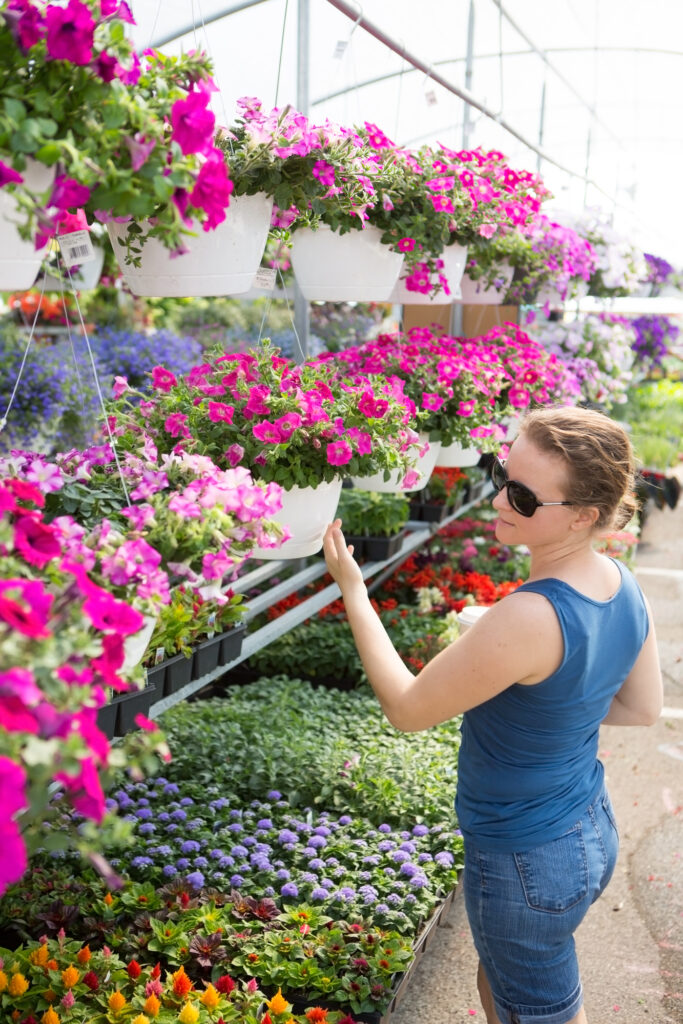
Table of Contents
Native vs Non-Native Perennial Plants
When choosing the best plants to attract bees and butterflies, you need to keep in mind the region you are living in, as well as look for plants that are native to your location.
A pollinator-friendly garden will be a butterfly magnet. However, you want them to have access to both nectar plants as well as host plants that support their entire life cycle. What does this mean?
Native plants provide food and shelter for pollinators early in the season. In other words, caterpillars will live and feed on them. These are often referred to as host plants.
Plants with nectar-rich flowers are equally important when planting flowering perennials. Non-native plants produce more nectar during longer periods of time throughout the year. This is great for bees and butterflies, however, it leaves the caterpillar with nowhere to live or feed. When choosing pollinator plants, look for both host plants and nectar-rich plants.
Perennial flower seeds for bees and butterflies
- Daisy Flower Seed Collection: Packets of Paper Daisy, Cape Daisy, Shasta Daisy, Yellow Daisy, and English Daisy flowers. These annual and perennial varieties produce a mix of beautiful white, pink, rose, and red blossoms.
- Perennial Lavender seeds: Non-GMO heirloom seeds that are drought tolerant.
- Purple Coneflower Seeds: Also known as echinacea, this flower is a popular one used in medicinal teas. Add it to your medicinal herb garden and grow your own tea!
Having spent years looking for the best plants to attract beneficial insects to our yard, I can tell you it isn’t always easy to find native plants for pollinator gardens. We look for native species at our local nursery or local plant sale, however, ultimately, we buy what is available.
Why is it important to have native species? Many nonnative plants are invasive and displace native plants; others can act as alternative hosts to parasites that attack native plants (e.g., whiteflies).
Pollinators are also particularly susceptible to pesticide use, which is more commonly needed when planting nonnative plants.
If you can’t find native plants, do your best to plant annual and perennial varieties that will bloom throughout multiple seasons.
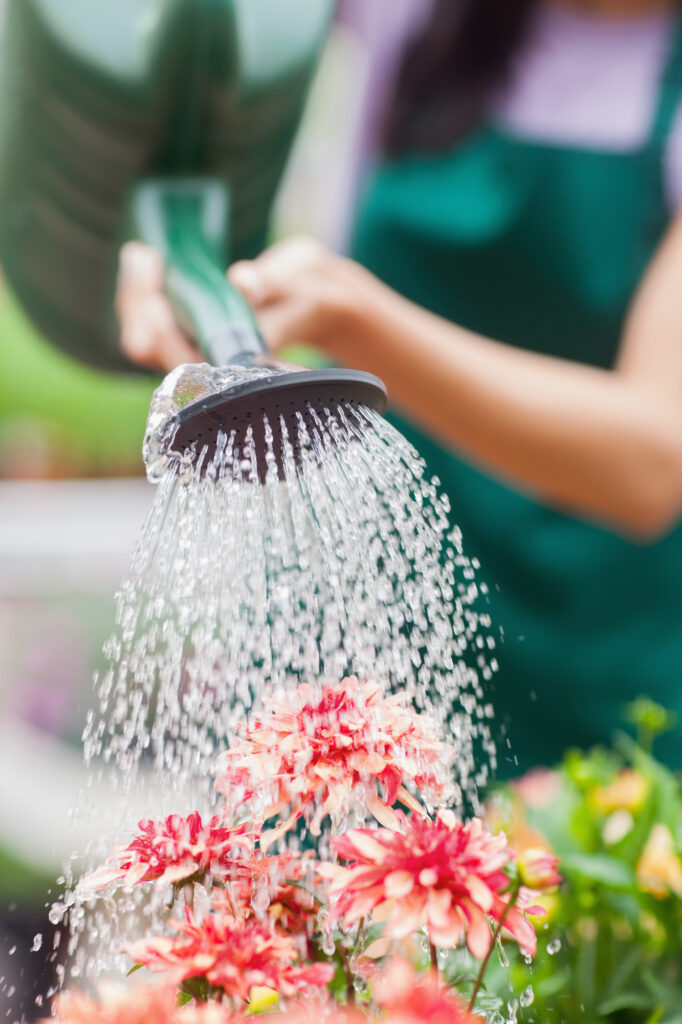
✯Don’t want to miss the next post?✯
Follow Turning the Clock Back on Facebook | Twitter | Pinterest
Or join the private Facebook group for simple tips on going green!
How do you take care of flowering perennials?
It’s important to plant pollinator-friendly perennials in the right spot. While each plant has unique growing requirements, in general, choose a sunny location with slightly moist soil, but be careful that you don’t overwater them.
Another thing to keep in mind is the condition of the plants when you buy them. A healthy plant will last longer than one that looks unhealthy when you bring it home.
A final consideration is the maintenance of your perennial garden. If you have a lot going on in your yard, you may want to plant a pollinator garden that is separate from your vegetable or fruit plants. Perrenials may be disturbed by the constant uprooting of nearby annuals.
Many perennials will continue to bloom throughout the growing season if you deadhead spent blooms. Deadheading is the gardening term used for the removal of faded or dead flowers from plants. It encourages new blooms and keeps your plants looking beautiful.
It’s important to find the best perennials for your specific region. If you live in a dry area, look for drought-tolerant plants that attract butterflies.
If you have very little sunlight coming to your yard, look for perennials that do well in light shade. On the other hand, don’t plant shade-loving plants in full sun or they won’t thrive.
Remember, most flowering perennials like well-drained soil and a decent amount of sunlight, but those requirements do vary depending on the plants chosen.
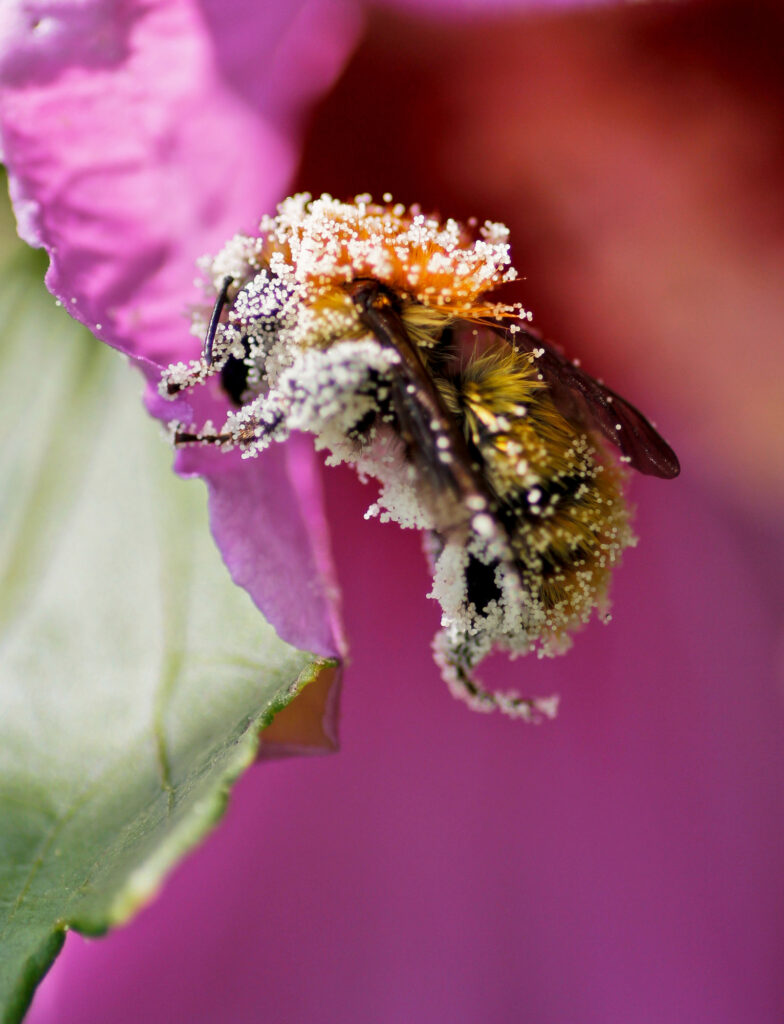
Plant nectar- and pollen-rich flowers
It’s very important to plant pollinator-friendly gardens, however, you need both pollen and nectar to make bees and butterflies happy.
Make sure to include both pollen-containing plants as well as those that pollinators choose for nectar.
A succession of annual, perennial, and shrub flowers should occur so that nectar and pollen can be found throughout the growing season.
Similarly, include a variety of plant types (both annuals and perennials) like dill, fennel, and milkweed that butterflies eat. All sizes of gardens attract pollinator populations — from wildflower meadows to a few well-chosen trees and potted plants.
Remember, variety is important. So, choose everything from milkweed that butterfly larvae feed on to vibrant flowers for adult butterflies and bees.
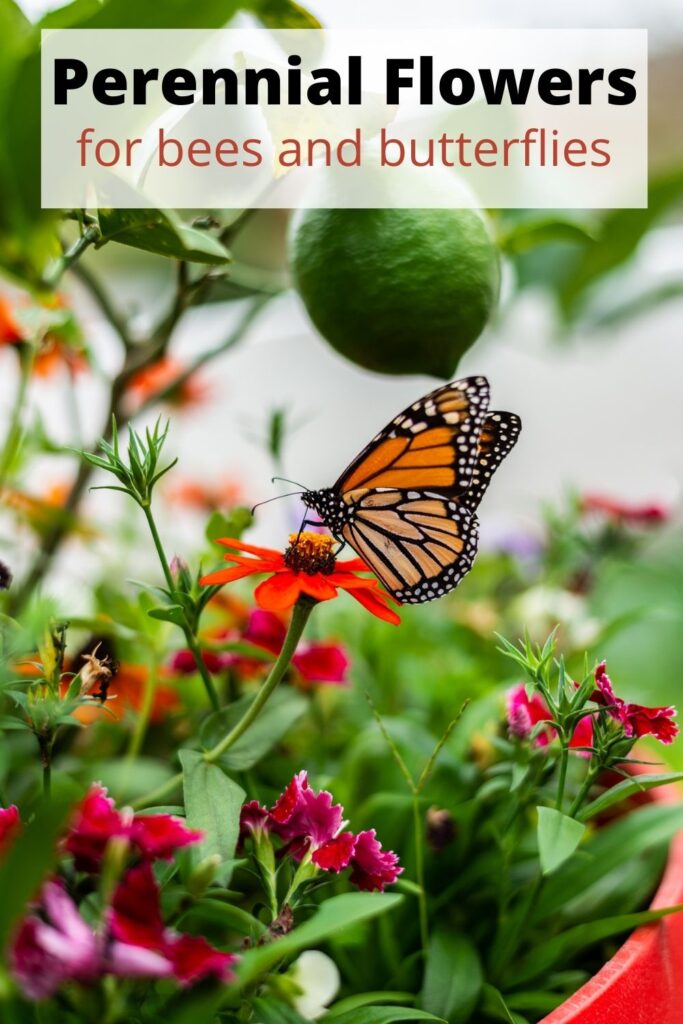
Best plants to attract bees and butterflies
As pollinating insects, bees and butterflies are very important to the garden. These insects fertilize plants by spreading pollen between flowers so that it produces fruit and seeds.
Pollinators are therefore critical to the healthy growth of fruits and vegetables particularly. Planting a pollinator-friendly garden is a great solution for getting insects into your yard. It is surprisingly relaxing to watch butterflies and busy bees flit about on vibrant flowers.
How do you plant a bee and butterfly garden? Start by planting a few of the perennial flowers below to attract bees, butterflies, and other beneficial insects to your pollinator garden. Remember, choose native species if available and look for plants that bloom in different seasons, from early summer to early fall.
And one of the most important things to remember is to SKIP THE PESTICIDES. Don’t attract bees and butterflies to your yard only to kill them off with pesticides. Prepare your garden beds with organic soil amendments to ensure healthy plants. Hang a butterfly feeder with DIY butterfly food to attract even more butterflies to your yard.
Check out my list of ways to protect pollinators for more actionable ways you can help.
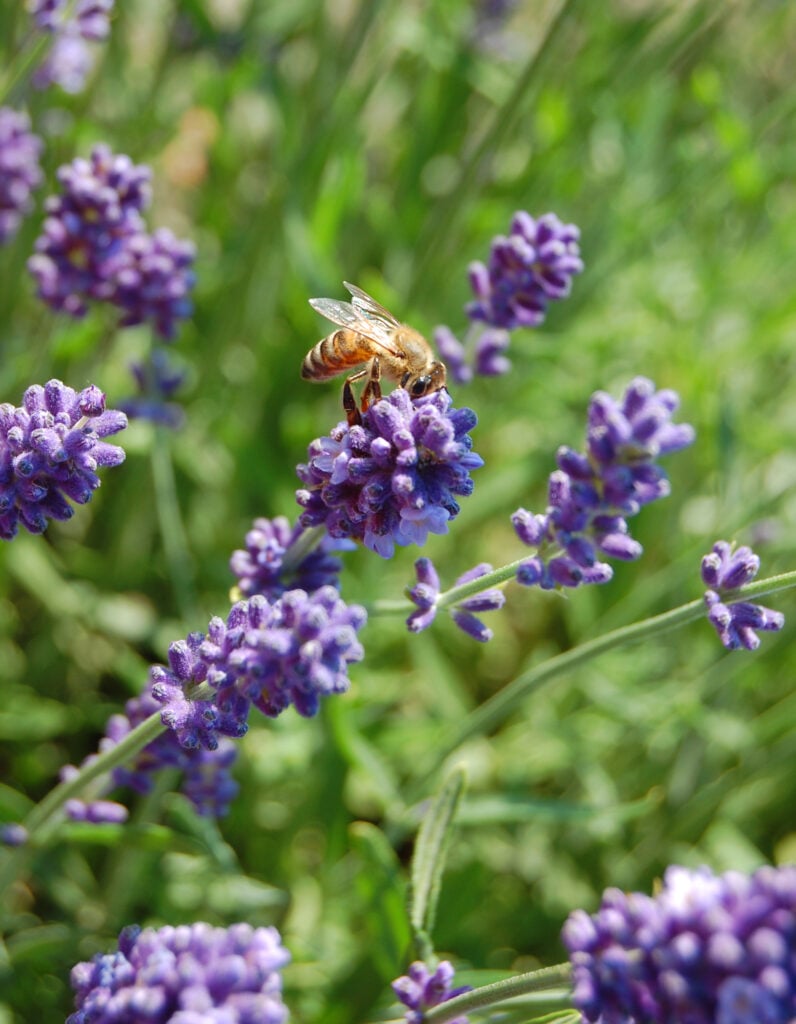
Lavender
Lavender’s fragrance is what many people most identify with the plant, but it also has silver foliage that adds a lovely touch to your garden.
The great thing about lavender is that bees and butterflies love it! It blooms from early summer until late fall and it can be planted in relatively poor soil as long as there is enough sunlight.
Lavender is a particularly hardy plant and usually doesn’t require any special care. With that said, you should remove any dead blooms as they appear to keep your lavender looking fresh and healthy. If the plant starts to look weedy or woodsy, just prune it back to rejuvenate it after the first year.
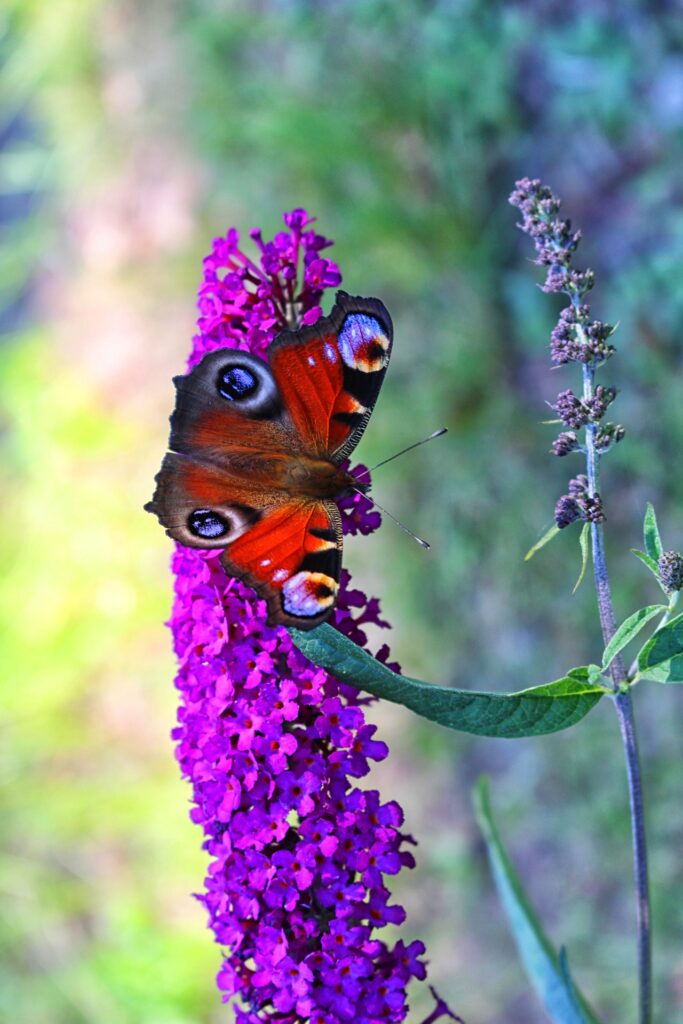
Butterfly bush
NOTE: There is some controversy over planting butterfly bush. Some varieties can be incredibly invasive. It is also considered a nectar plant rather than a host plant. Do your research.
We have a variety of butterfly bush that does not spread at all and makes beautiful purple flowers that butterflies love. We also have host plants in our yard to feed caterpillars, which butterfly bush will not do.
The common name for this plant comes from its high nectar production which makes it an ideal food source for butterflies and bees. It can be used as a shrub or a tree depending on your preference.
The butterflies and wild bees love this plant because it blooms for a long time, from early summer to fall, depending on the variety. In addition, you can prune it back in spring to keep it from getting too big.
It does well with average rainfall in moist soil but thrives in dry locations as well.
You can plant this in full sun or in partial shade and it requires only minimal care. Plus, you can grow it in poor soil with enough sunlight and it will still produce beautiful blooms all summer long.
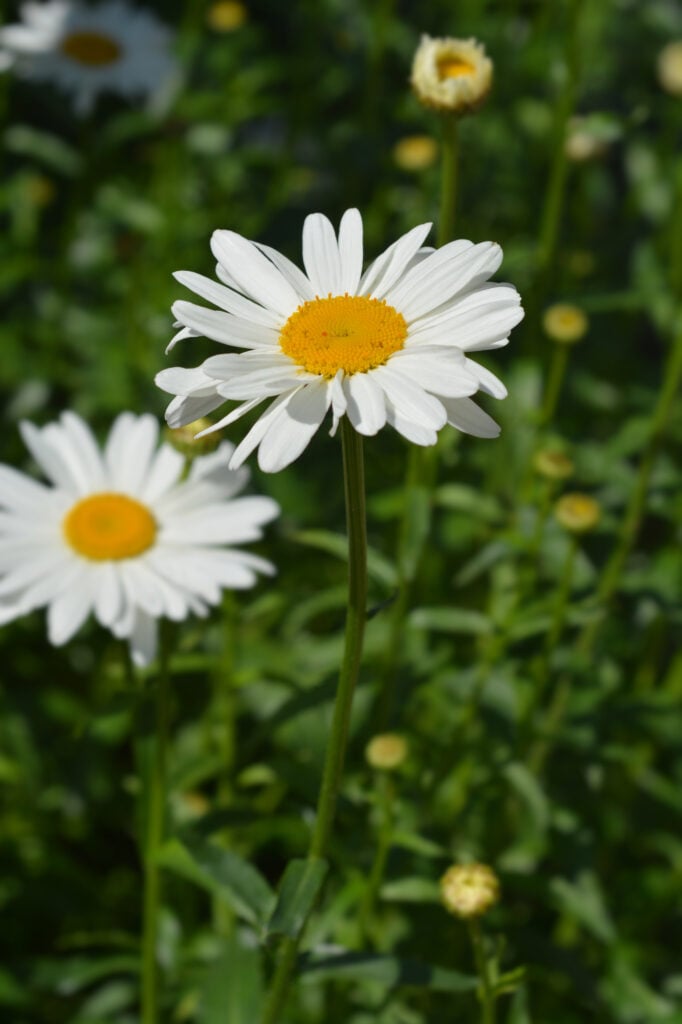
Daisy family
The daisy family includes many different types of perennials. Two commonly planted species in this group are Shasta daisy (Leucanthemum x superbum), and bright yellow coreopsis (coreopsis verticillata).
They grow best in full sun but also do well in partial shade with average to moist soil conditions. Daisies can grow in poor soil, but they will not produce as many blooms.
They bloom from late spring until early fall and attract bees and butterflies to the garden throughout this time.
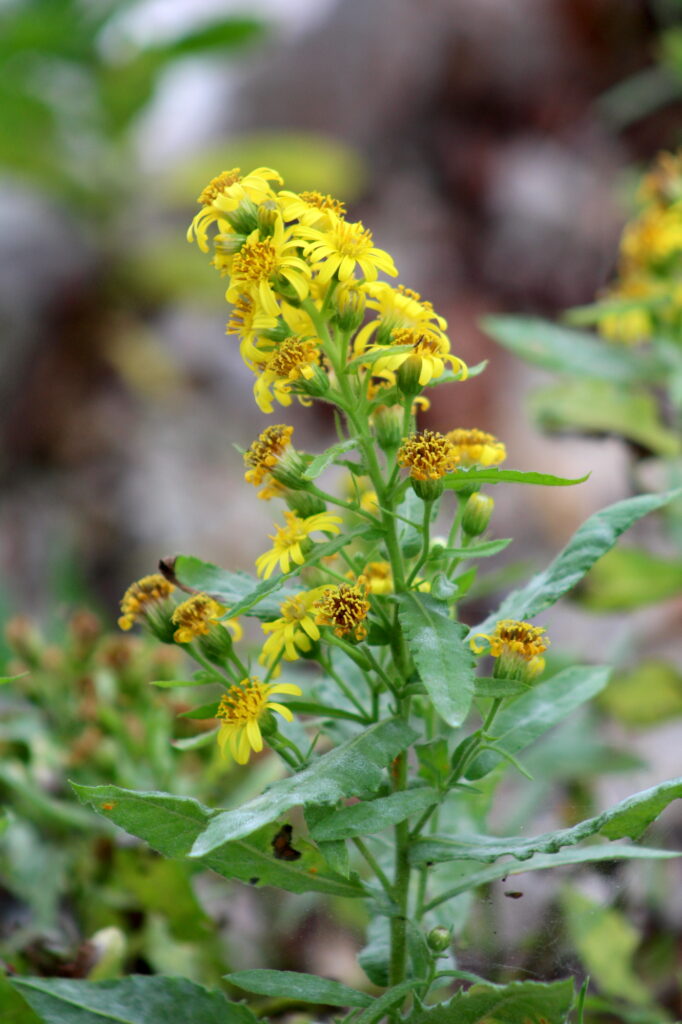
Goldenrod
Goldenrod is a great choice for your pollinator garden. Most goldenrods offer both nectar and pollen to insects.
Plus, they come in a wide range of colors and blooming times so there’s a variety that will work in any garden.
There are a few different varieties of goldenrod, but most have average water needs with full sun or partial shade and damp to average soil conditions.
The native bees and butterflies in our yard love the nectar-rich blooms on these plants so they can definitely help attract beneficial insects to your pollinator garden.
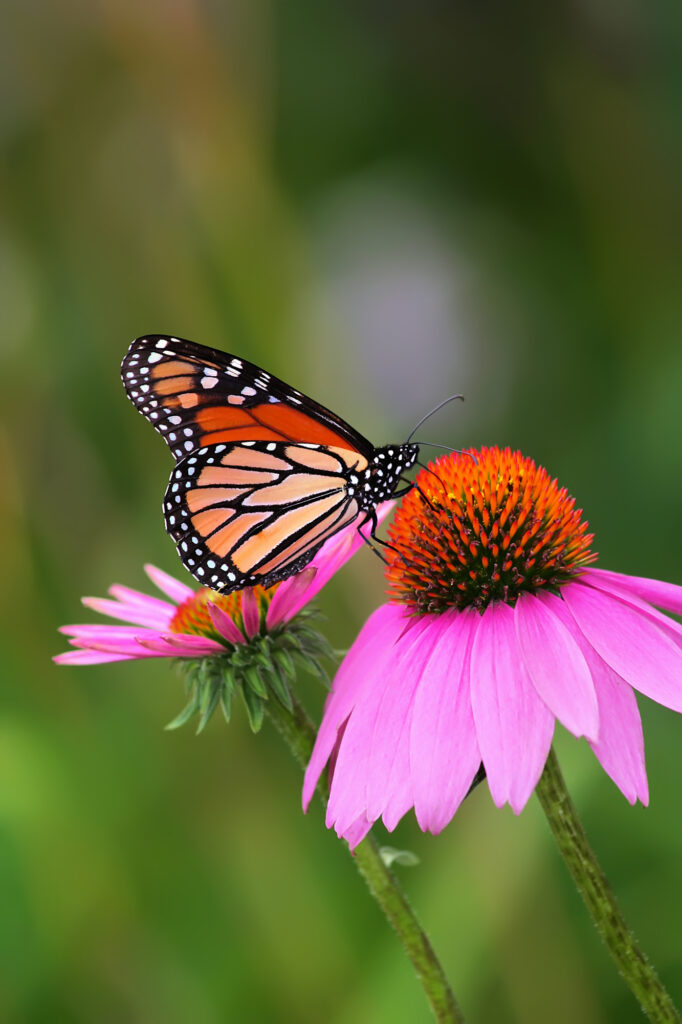
Coneflower
Coneflowers are a great choice for the pollinator garden with a wide range of varieties to choose from. We have a native type in our yard that makes beautiful purple flowers.
They can grow in most locations, from full sun to partial shade with average to dry soil conditions. They do well if there is enough water around but will survive in poor soil as well.
The coneflowers have a long blooming period to attract bees and butterflies from the early months of summer into the fall.
They add beauty to your garden with their large, daisy-like flowers in shades of pink to purple and yellow.
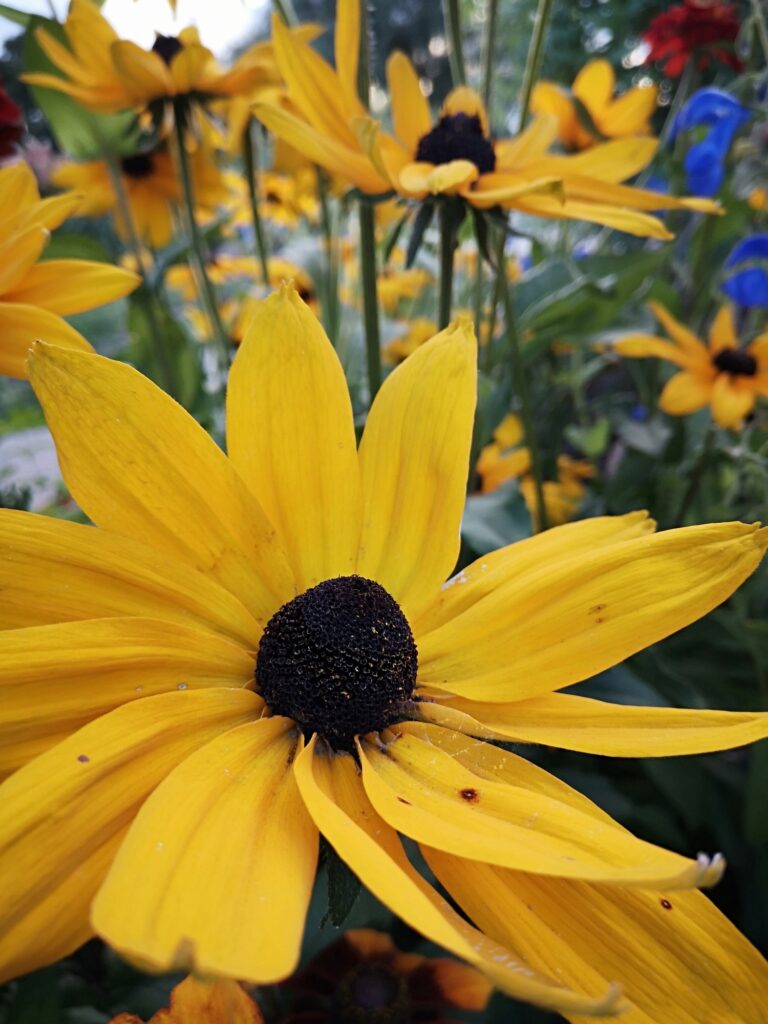
Black-Eyed Susans
Black-eyed Susans are one of the first plants to bloom each year. We have quite a few types in our yard that bloom from mid-spring until early fall.
They require full sun and moist soil conditions, but they will tolerate dry conditions as well. They do best if watered regularly, especially through hot summer months.
This is a great choice for your pollinator garden because they have long blooming periods to keep attracting bees, butterflies, and other pollinators.
They are perfect for creating a colorful border in soil with average drainage or in pots on the deck where water drains easily.
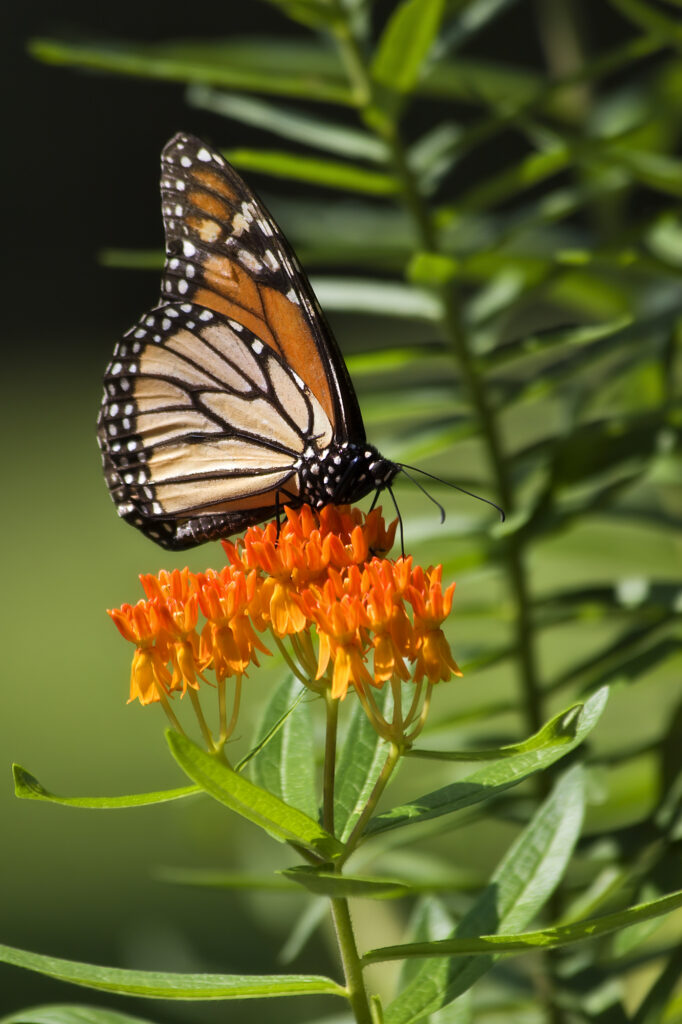
Milkweed
Milkweed is a main source of food for the Monarch butterfly so you definitely want to include it in your pollinator garden.
They have average water needs with full sun or partial shade and wet conditions, but they will also grow in poor soil.
There are several different types that come in shades of pink, lavender, white, and red with varying heights. They look beautiful planted in large groups to create a colorful border or as a backdrop for other flowers.
They do best if you cut the foliage back each fall and remove it from the garden because this keeps them healthy and they will return each year.
We have our milkweed growing all over the yard, but it thrives in drier spots where nothing else will grow.
They add a lot of color to the garden and attract butterflies from mid-summer until late fall.
Keep in mind, you don’t want Tropical milkweed (Asclepias curassavica), which is non-native milkweed that has exploded in popularity in response to the demand for milkweed. Look for native varieties that are what monarch butterflies really need.
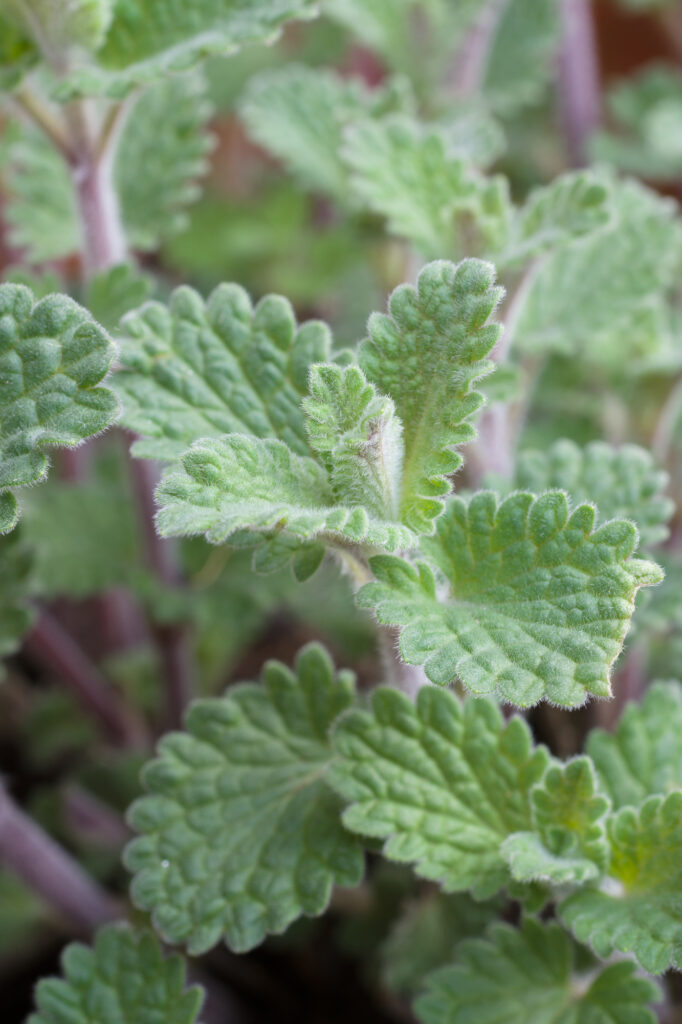
Catmint
Catmint is a wonderful pollinator plant that attracts bees and butterflies to the garden.
It’s also known as Long-leaf catnip or Nepeta faassenii, which is native to the eastern US.
It has average water needs with full sun or partial shade and average soil conditions. It does need regular watering but can tolerate poor soil.
Catmint grows about 10 to 24 inches tall with lavender flowers that attract butterflies and bees in summer through early fall. The foliage is gray-green and looks beautiful against the purplish-blue flowers.
Catmint does best if it’s planted in moist soil but can survive dry, clay soils as well so it works great for dry spots in your yard.
It grows quickly and is a beautiful backdrop to other plants in the pollinator garden with its tall, stately flowers.
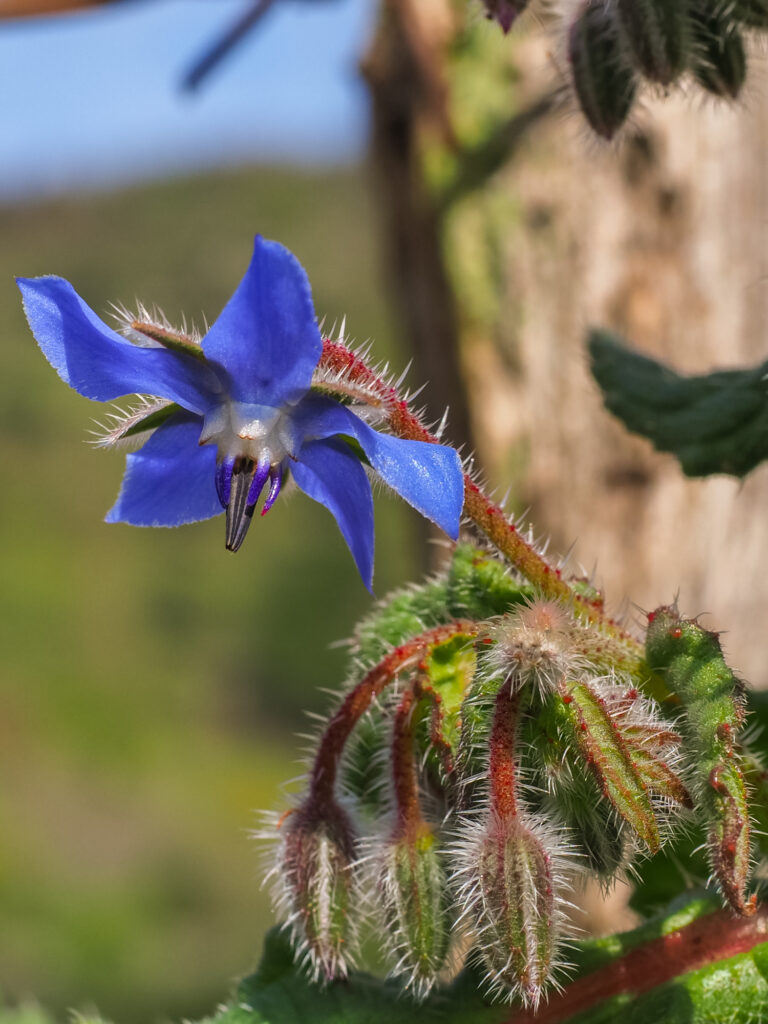
Borage
Borage is a beautiful, easy-to-grow plant for your pollinator garden.
There are blue and pink varieties that grow best in full sun with average soil conditions. They can survive in poor soils as well, but they prefer moist areas to the dry ones where it will only produce foliage.
The flower spikes attract bees and butterflies from summer through fall.
It’s a tall plant that adds height and color to your pollinator garden which is nice for borders or mixed in with the other plants that attract butterflies and bees.
Be sure to include it in pots on decks where water drains easily because borage needs plenty of water.
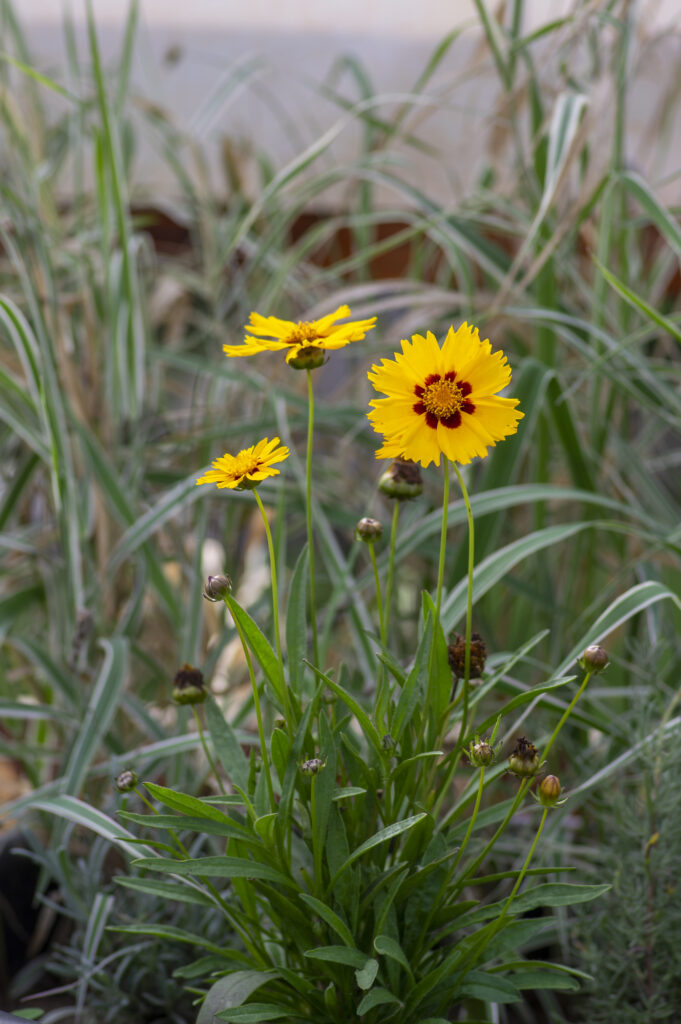
Tickseed
Tickseed is another colorful plant that blooms from late spring through early fall.
The flowers range from yellow to orange or red. They attract butterflies, bees, and several moth species to the garden with their long blooming period.
It’s a native herbaceous plant that has average water needs but it can survive drought conditions as well.
Tickseed grows up to 18″ tall with a spread of 12-24″. It can handle dry soil, but it does best if you plant it in moist areas or even poor soils.
It’s also known by the name Coreopsis and is perfect for borders or mixed with other plantings.
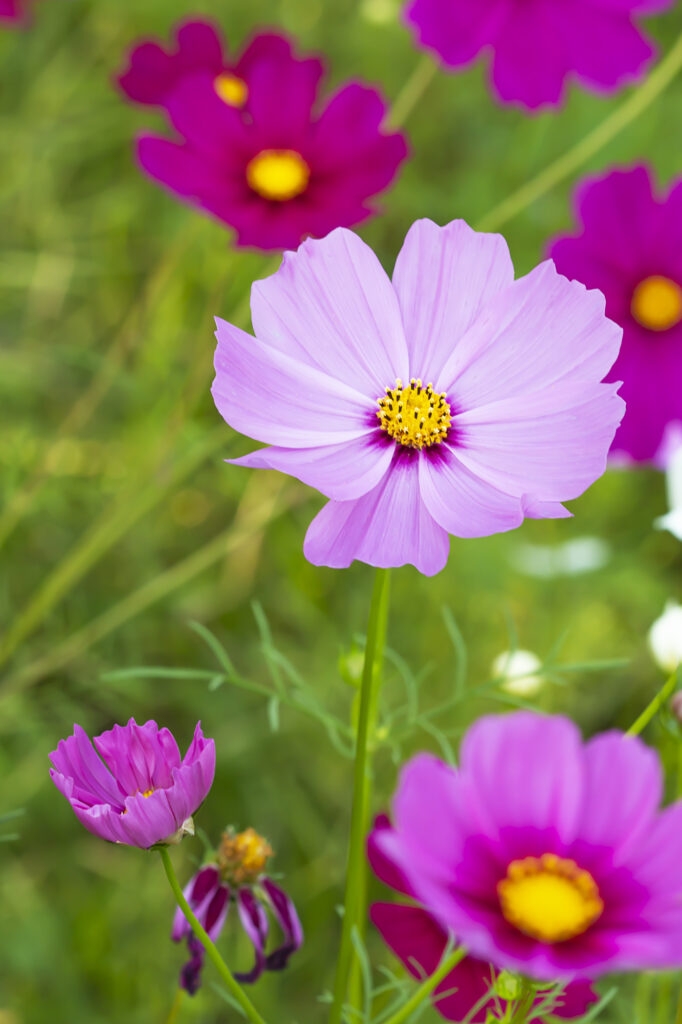
Garden Cosmos
When choosing perennial plants for bees and butterflies, coneflowers are a great choice. Their vibrant flowers attract many butterflies, bees, and other beneficial insects to the garden.
It prefers a lot of sun but can tolerate partial shade with average soil conditions that drain well.
They do best if you remove dead flowers in the fall so they will grow back stronger every year.
The plants prefer moist soils but can tolerate drought conditions when they’re established.
The plants grow from 1 to 5 feet tall depending on the variety and the foliage is green with yellow flowers that attract pollinators in summer through early fall.
Grow them in borders, gardens, or mixed with other plantings such as cabbages and sunflowers to help naturally repel pests from your garden.
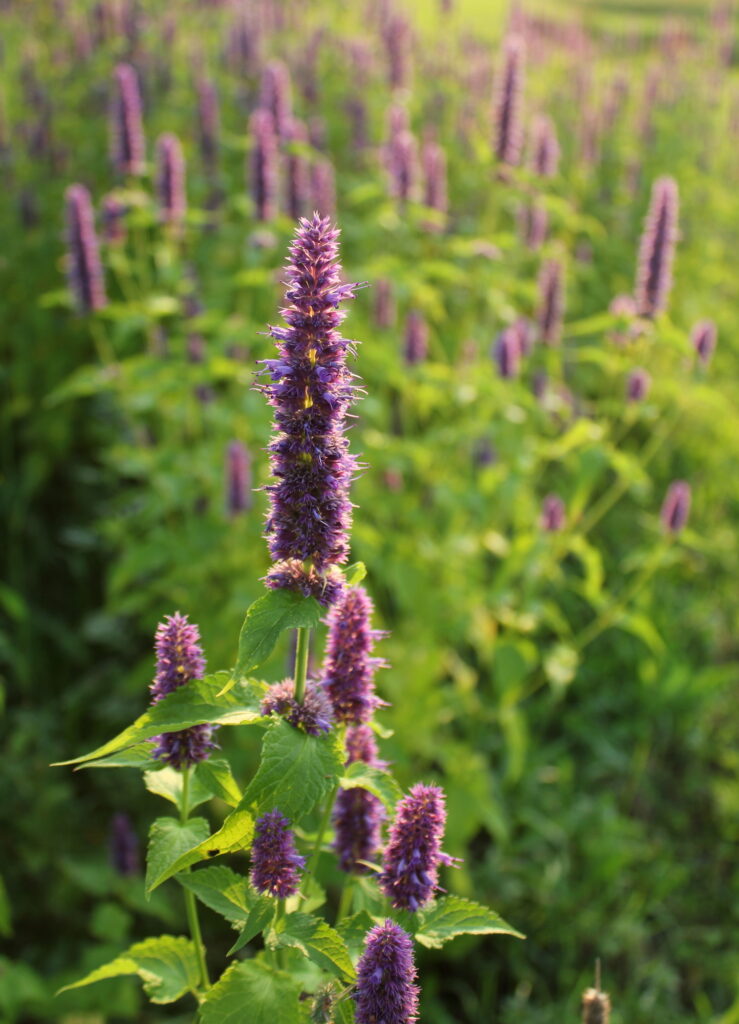
Giant Hyssop
Giant hyssop is a perennial that blooms its beautiful blue or purple flowers from summer through fall.
They prefer a full day of sun with average to poor soil conditions that drain well. They can handle drought conditions once established in the garden but they will grow faster with regular watering.
Giant hyssop plants grow 4 to 6 feet tall and 3 feet wide, which makes them perfect for landscaping areas.
They attract bees and butterflies in late summer through fall.
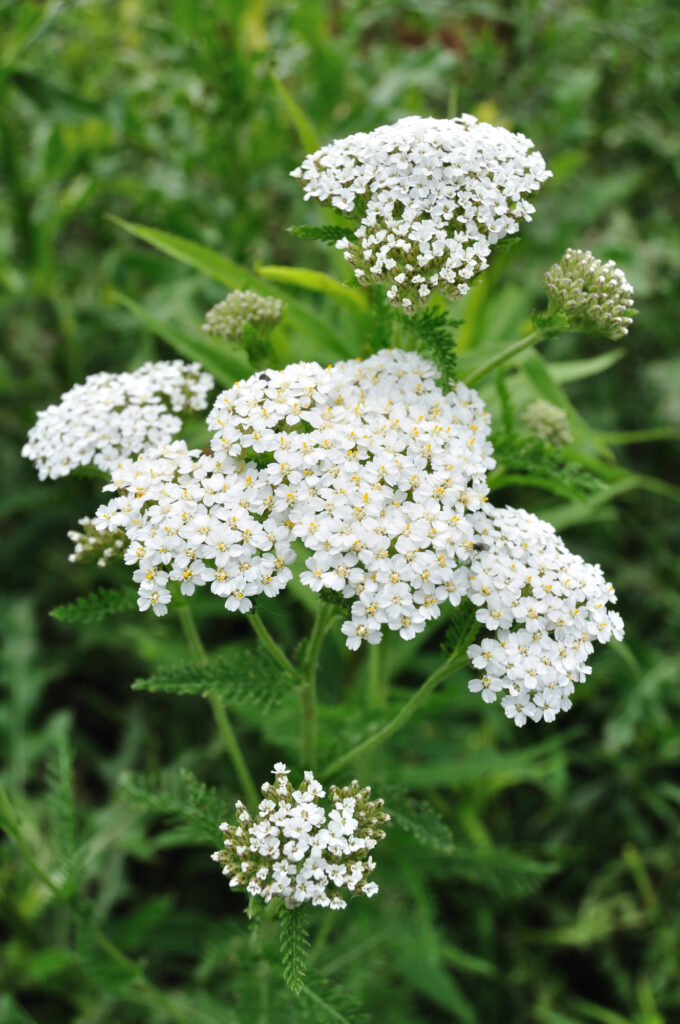
Yarrow
The flowers are long-blooming with several varieties that come in yellow, pink, white, and red.
It’s a very hardy plant that attracts bees and butterflies since it’s nectar-rich. It prefers partial shade but can grow in full sun with average soil conditions that drain well.
Keep the soil slightly moist to prevent the yarrow from wilting during the day.
It’s an easy-to-grow perennial that grows to 3 feet tall with a spread of 2 feet wide. Yarrow is perfect for borders, mixed in with other plantings, or along with other plants that attract bees and butterflies.
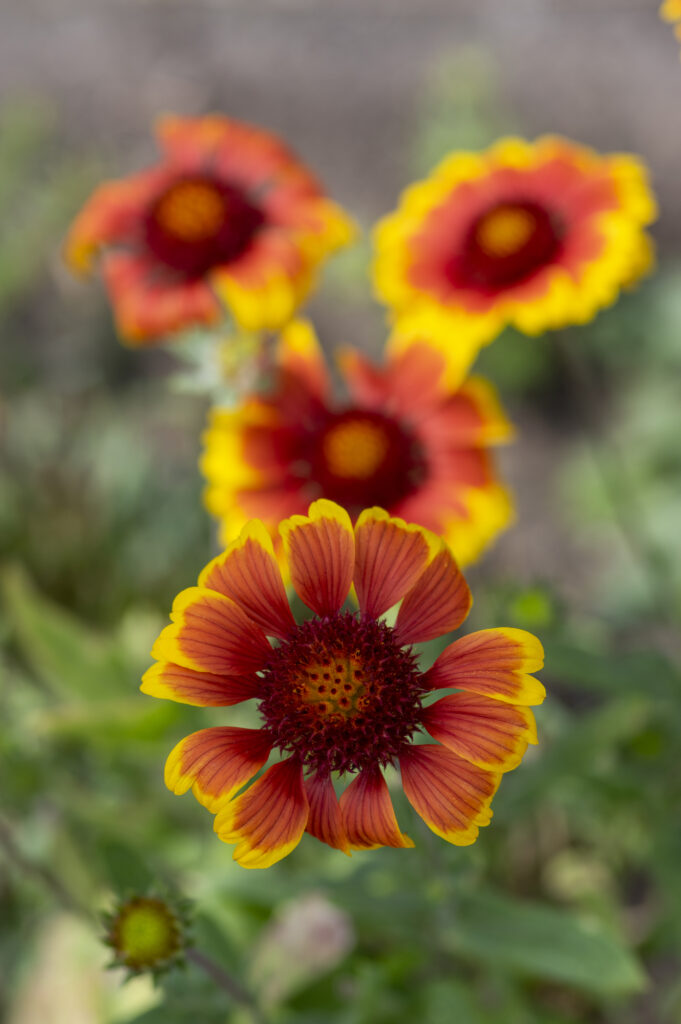
Blanket Flowers
This is a great plant for your pollinator garden with its long blooming period and easy-to-grow conditions.
Blanket flowers bloom from summer through fall with purple, red, or white flowers that attract butterflies and bees all season long.
They also look stunning in the garden as borders or mixed with other plantings such as cabbages and sunflowers.
The plants grow 2 feet tall and 3 feet wide and prefer partial shade or full sun with average soil conditions that drain well.
They produce thin, needle-like leaves and the flowers come in clusters on top of their thin stems. The blooms can range from white to red to purple depending on the variety.
Blanket flowers grow well in almost any soil condition as long as they’re not too wet or dry.
Plant them in borders, mixed with other plantings, and cut and use the blooms to add color indoors during the winter months.
Their name is derived from its blanket-like appearance when planted along hillsides and slopes.
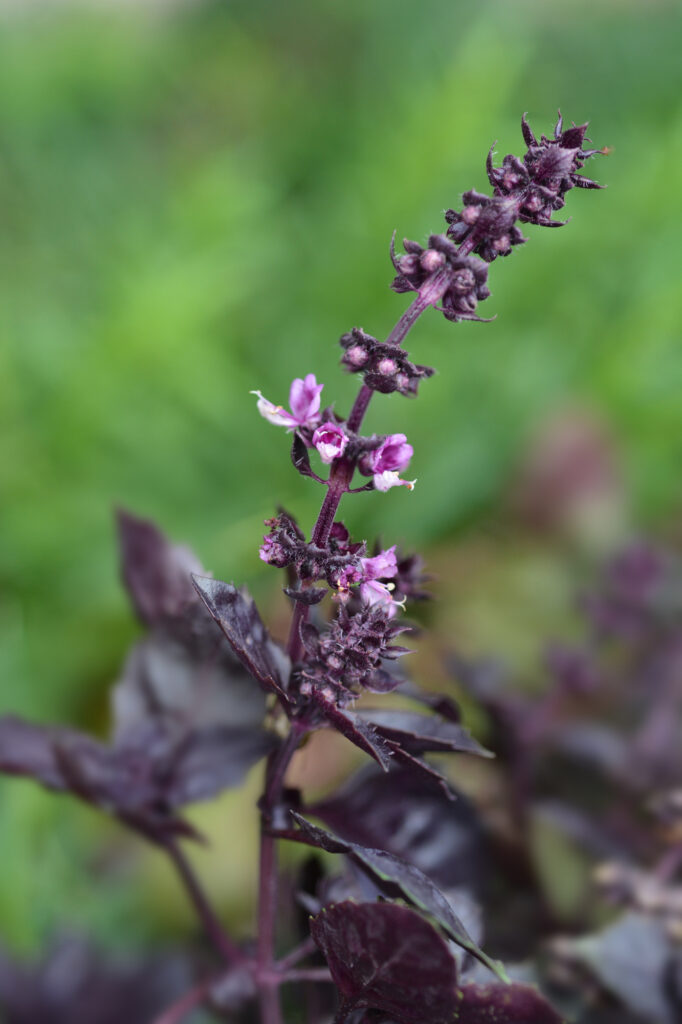
Perennial Basil
While most basil plants are annuals, there are a few varieties of perennial basil, including Red Rubin and Dark Opal basil. Check out this variety pack of basil seeds if you would like to grow perennial basil.
This plant needs partial shade and moist soil to grow well.
It attracts bees, wasps, butterflies, and hummingbirds starting in the spring through fall.
They prefer full sun but can survive in partial shade if their soil is moist. Basil plants reach 2 feet tall with a spread of 1 foot wide.
The plants have a strong spicy scent which makes them perfect for cooking as well as being a beneficial plant in your pollinator garden.
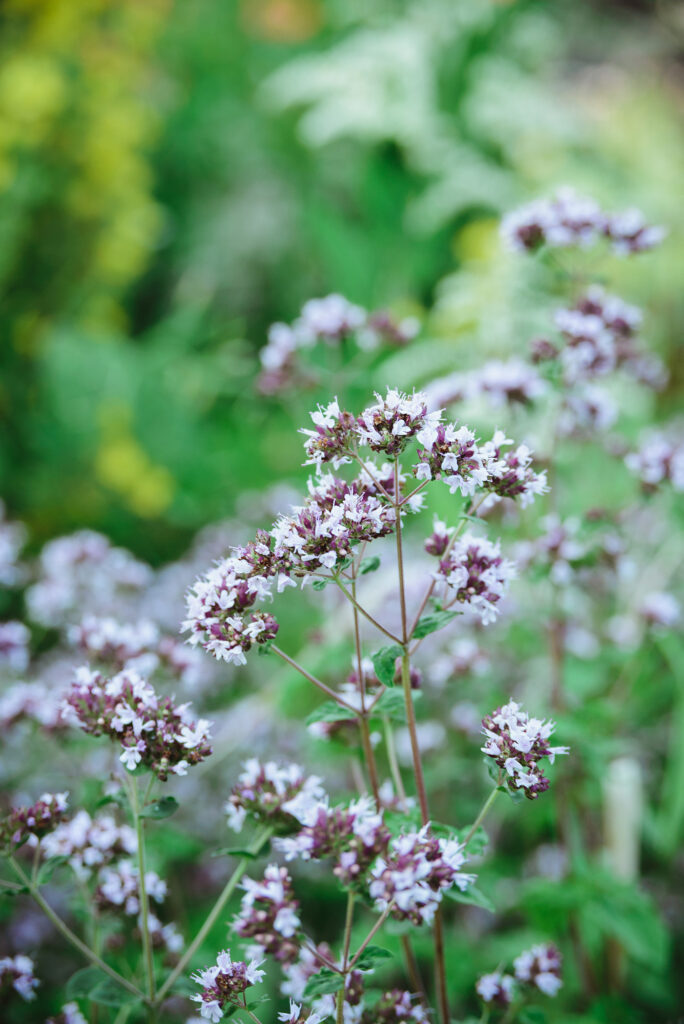
Oregano
Oregano is a hardy perennial herb that prefers full sun but can handle some shade. It’s drought-tolerant once established but does better with regular watering for faster growth.
The plants are 2 feet tall and like basil, oregano is a great herb to grow in your garden to attract pollinators as well as bees that make the sweetest honey!
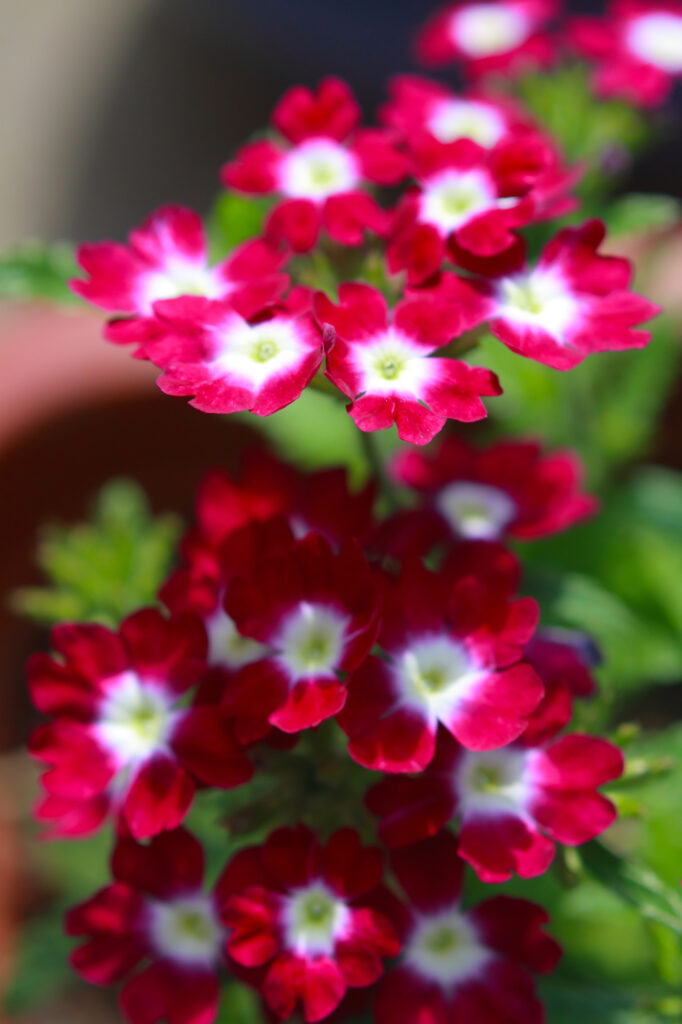
Verbena
Verbena has beautiful clusters of fragrant purple, pink, or white flowers that bloom all summer long. It helps naturally repel pests from the garden.
The plants are low-maintenance with average soil conditions but do better with regular watering once they’re established.
They grow well in full sun to partial shade with a height of 12 inches and a spread of 2 feet wide.
Verbena is perfect for borders or growing in pots on your deck or patio as it doesn’t take up much space and the flowers are stunning!
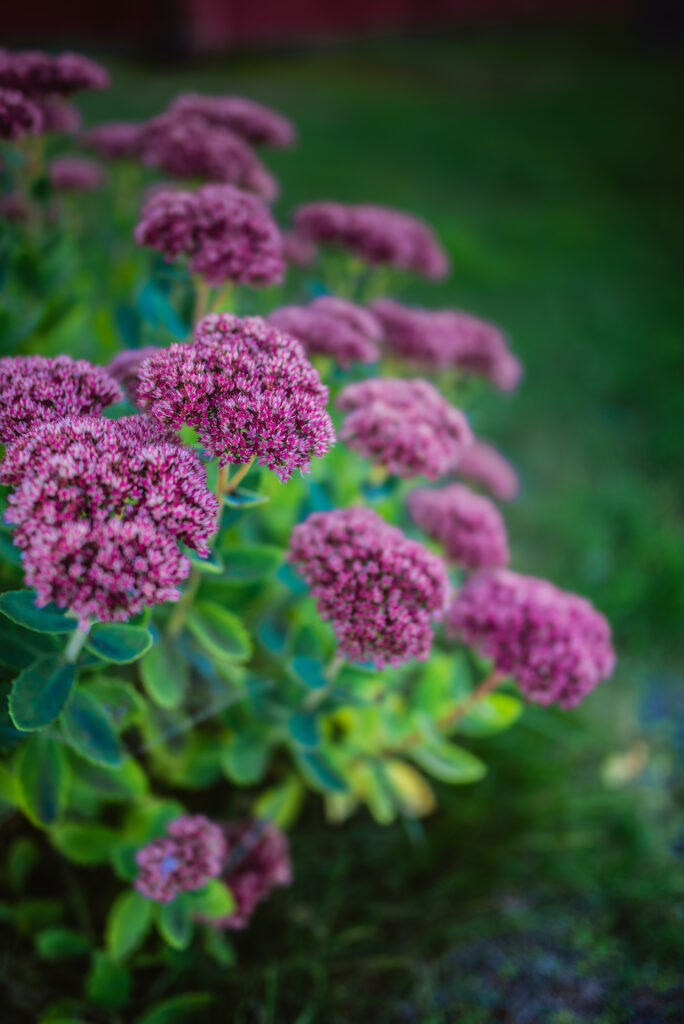
Stonecrop
Stonecrop is originally native to New Zealand. It’s a low-growing succulent plant that can handle full sun and partial shade.
The plants are drought-tolerant once established but do better with regular watering with average soil conditions.
They grow in clumps of gray-green leaves reaching 2 feet tall and 1 foot wide.
Stonecrop is perfect for borders or mixed with other plants in your pollinator garden.
It’s a beautiful way to add color to your garden year-round while attracting several types of bees and butterflies.
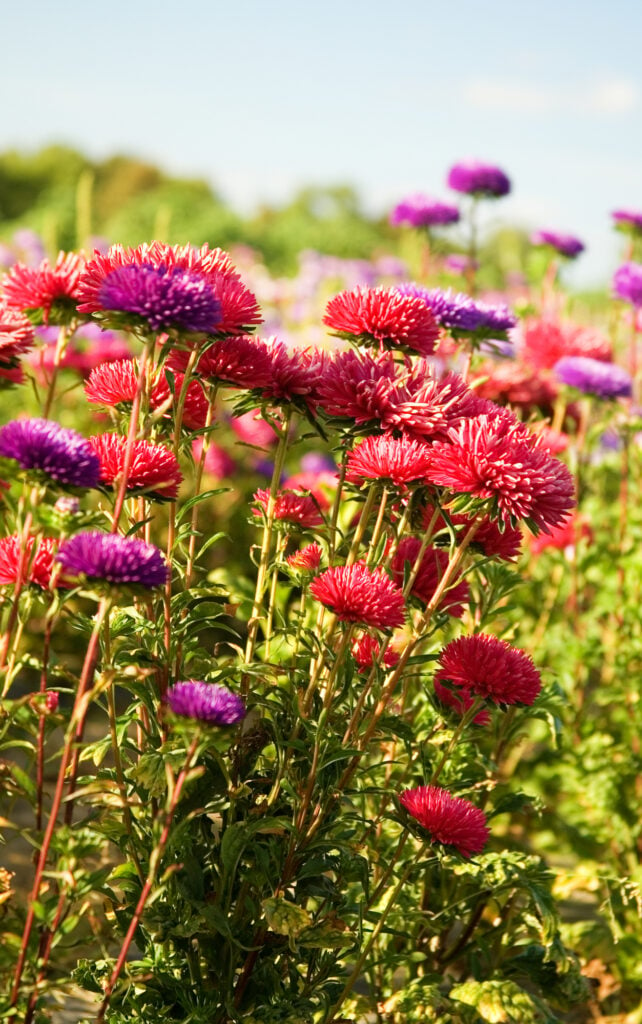
New England Asters
New England aster is a hardy perennial plant that blooms late summer through fall.
It reaches 2 feet tall with purple or lavender flowers that attract bees, butterflies, and wasps all season long.
They need full sun exposure but can handle some shade as well as average soil conditions.
The plants are low-maintenance and an excellent choice for the pollinator garden.
They look stunning planted all together or mixed with other flowers throughout your garden landscape..
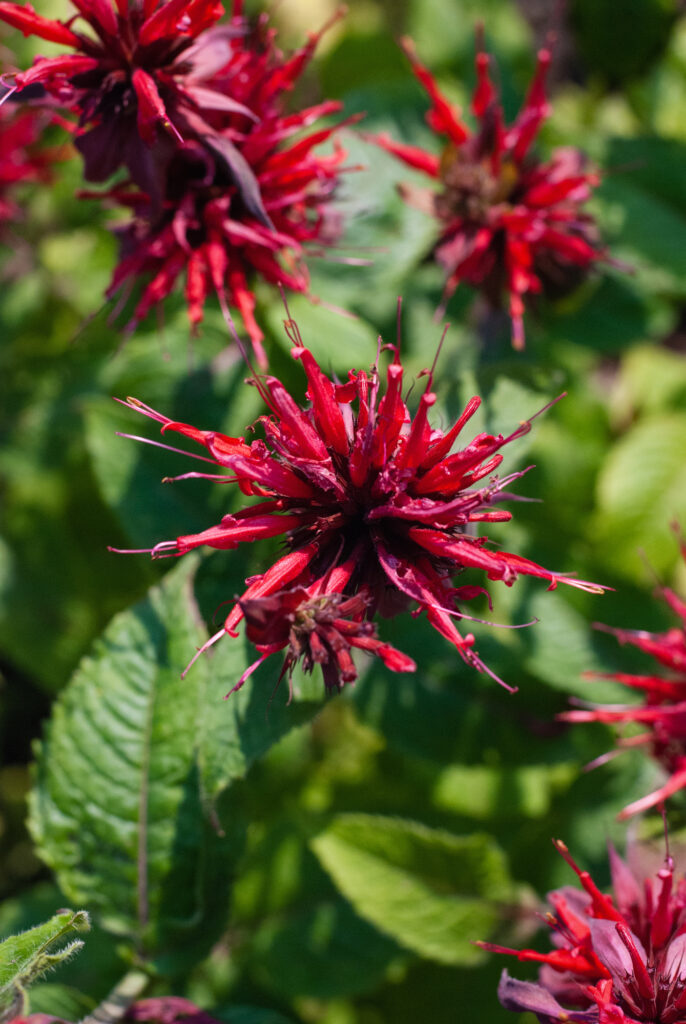
Scarlet Beebalm
Scarlet beebalm is a North American native wildflower that attracts bees, wasps, and butterflies.
This plant needs full sun or partial shade with moist but well-drained soil to thrive.
It reaches 4 feet tall with bright red flowers from spring through fall.
This plant is low-maintenance which makes it an excellent choice for the pollinator garden.
The bright color adds a punch of color to your garden year-round, especially when there are no longer any blooms from other plants in the landscape beds or borders.
We have this plant in our own pollinator garden and it spreads a bit so make sure you keep it contained if you don’t want it taking over other areas.
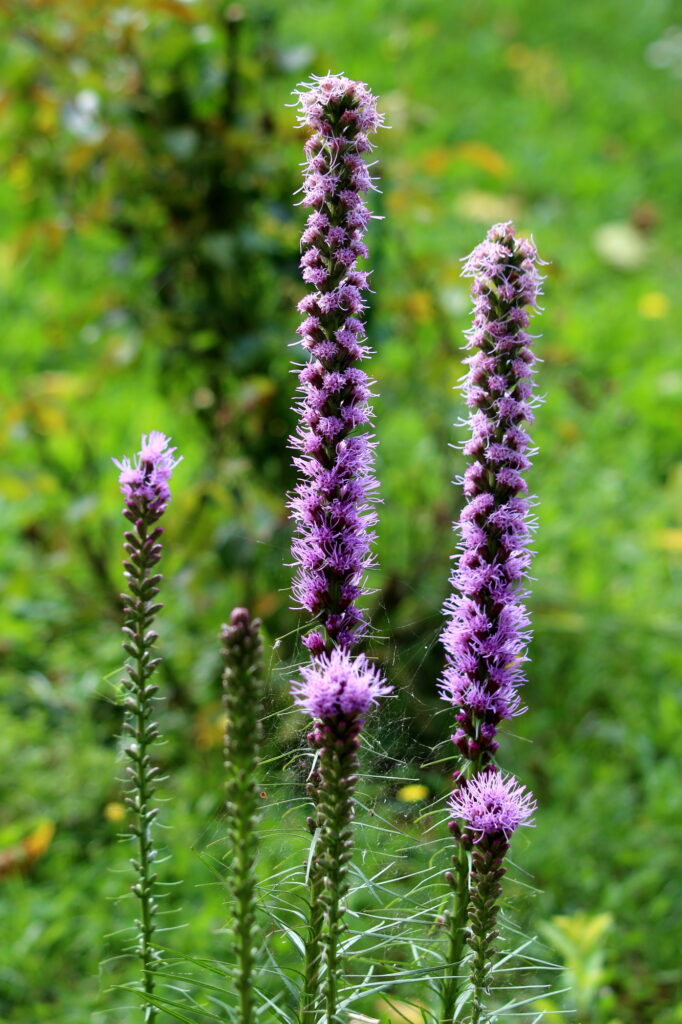
Dense Blazing Star
Dense Blazing Star is a hardy perennial with bright-colored tubular flowers that attract bees, wasps, butterflies, and hummingbirds all summer long.
It needs full sun to light shade with average soil conditions but does better with regular watering.
The blooms are stunning and look wonderful mixed with other perennials in the pollinator garden or landscape beds.
The plants grow in upright clumps reaching 3 feet tall with purple or lavender flowers that bloom all summer long.
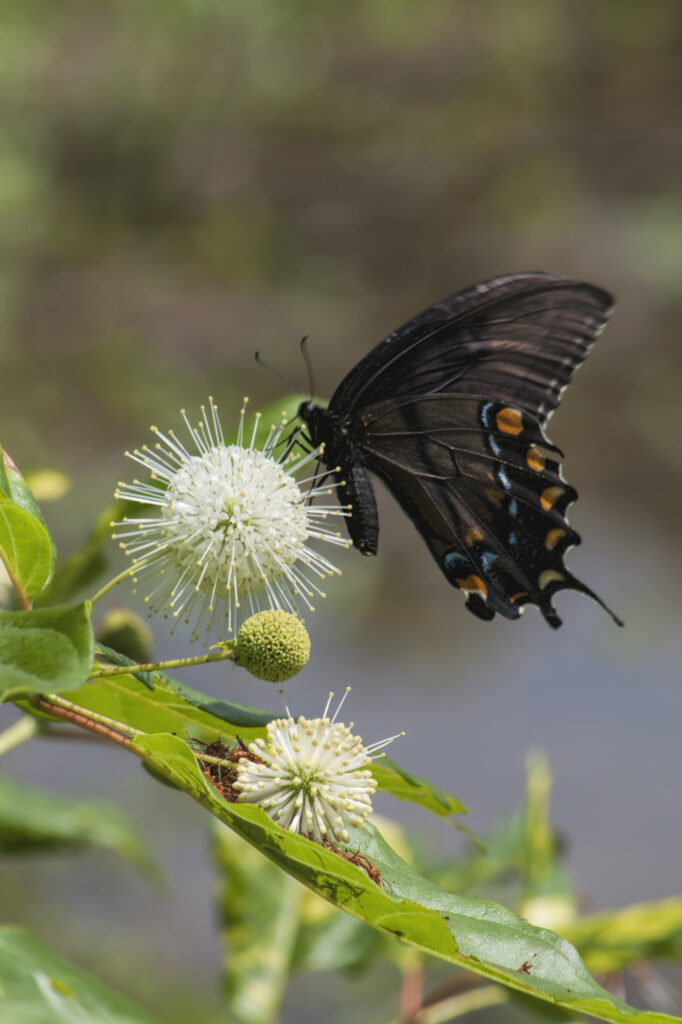
Buttonbush
Buttonbush is a North American native plant that does best in moist soil conditions.
It blooms lovely white flowers from May to July and attracts honeybees, bumblebees, and butterflies all season long.
This tree-like shrub can grow up to 15 feet high with an 8 foot spread so make sure you have plenty of space before adding it to your pollinator garden.
It’s perfect for borders or in landscape beds mixed with other trees and shrubs that bees enjoy like wild lilac, viburnum, blackberry, or blueberry bushes.
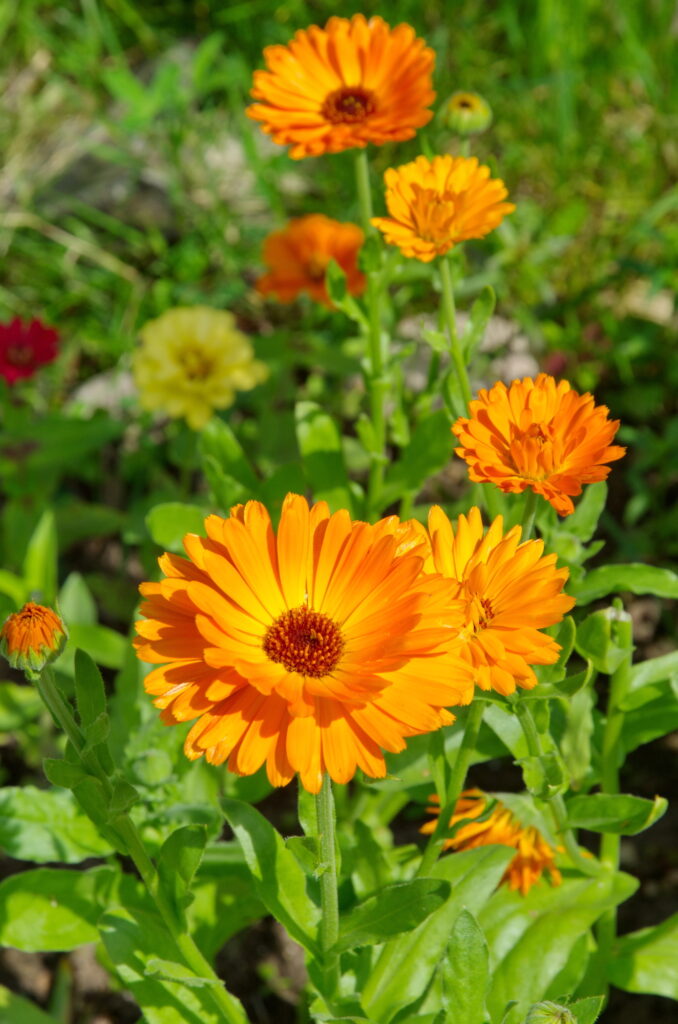
Calendula
Calendula is the perfect plant for pollinators! This hardy annual blooms all summer long, whether it’s sunny or cloudy.
It needs full sun and moist soil conditions to thrive with an average pH level of 6.8-7.8.
The bright orange flowers attract many types of bees, butterflies, and wasps.
It’s perfect for borders or in landscape beds mixed with other perennials that bees enjoy.
The bright flowers are gorgeous planted all together or intermixed throughout your pollinator garden, especially alongside other color-blooming plants like marigold, sunflower, daisy, zinnia, snapdragons, black-eyed susans, and heleniums.
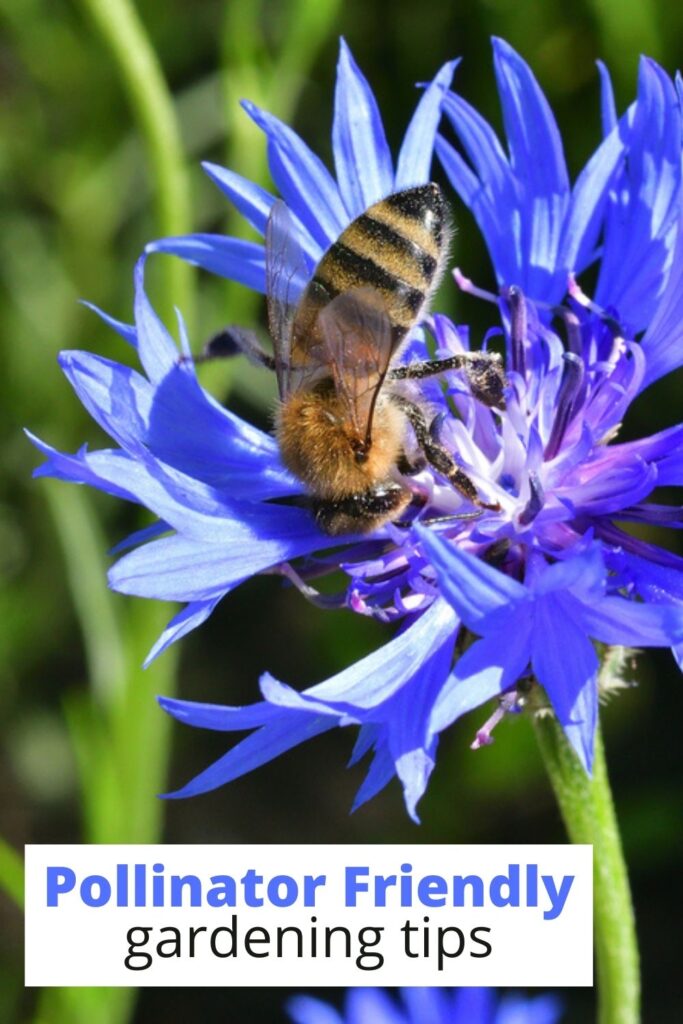
More Pollinator Friendly Articles To Read
Growing perennial plants for bees and butterflies is incredibly important. The decline of pollinators is a major threat to our food supply. We can all help protect these important creatures by making sure that we have pollinator-friendly plants in our gardens and by taking steps to protect them wherever possible. Here are a few more gardening tips for pollinator-friendly yards.
- DIY Mason Bee House: This DIY mason bee house is my attempt at attracting more pollinators to my yard and providing them a safe place to feed and reproduce.
- Pollinator Watering Station: Looking for a fun garden DIY project? This Honeybee Watering Station provides water for bees and other pollinators. Easy to make from an upcycled plant pot saucer, small stones, and colorful gems.
- How to attract beneficial insects to your garden: Knowing how to attract beneficial insects to your garden can make or break your harvest.
By doing our part, we can ensure that future generations will be able to enjoy the bounty of crops that depend on bees and other insects for pollination. For more information on pollinator gardens, check out my post about how to plant a butterfly garden. Or head over and learn what butterflies eat and drink besides flower nectar.
And if you have kids, planting pollinator-friendly plants is a great way to teach them about not only plants and gardening but also the importance of pollinators to our food supply. Check out my listing on Etsy for a butterfly lifecycle printable that will help teach them more about butterflies and caterpillars.
If you have enjoyed this post, check out my tips for growing sunflowers and start enjoying the beauty of backyard gardening.
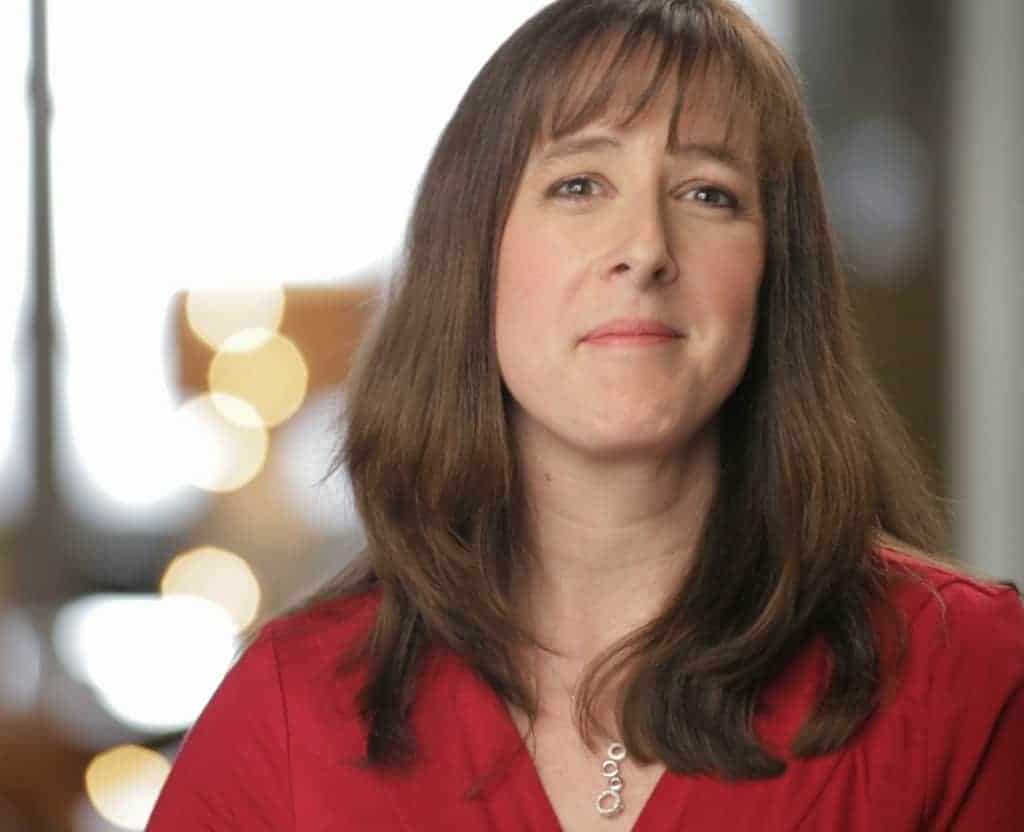
Diane is a professional blogger and nationally certified pharmacy technician at Good Pill Pharmacy. She earned her BS in Microbiology at the University of New Hampshire and has worked in cancer research, academics, and biotechnology. Concern over the growing incidence of human disease and the birth of her children led her to begin living a more natural life. She quickly realized that the information she was learning along the way could be beneficial to many others and started blogging and freelance writing to share this knowledge with others. Learn more about her HERE.

When should a perennial flower garden be planted? I live in Michigan. I am looking to plant a bee and butterfly flower garden. Thanks in advance for your help. Pam
Generally most things are planted in spring, whenever the threat of frost is over. You can plant some mature plants in fall, but I would ask at your local nursery.